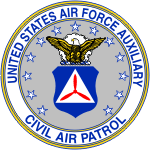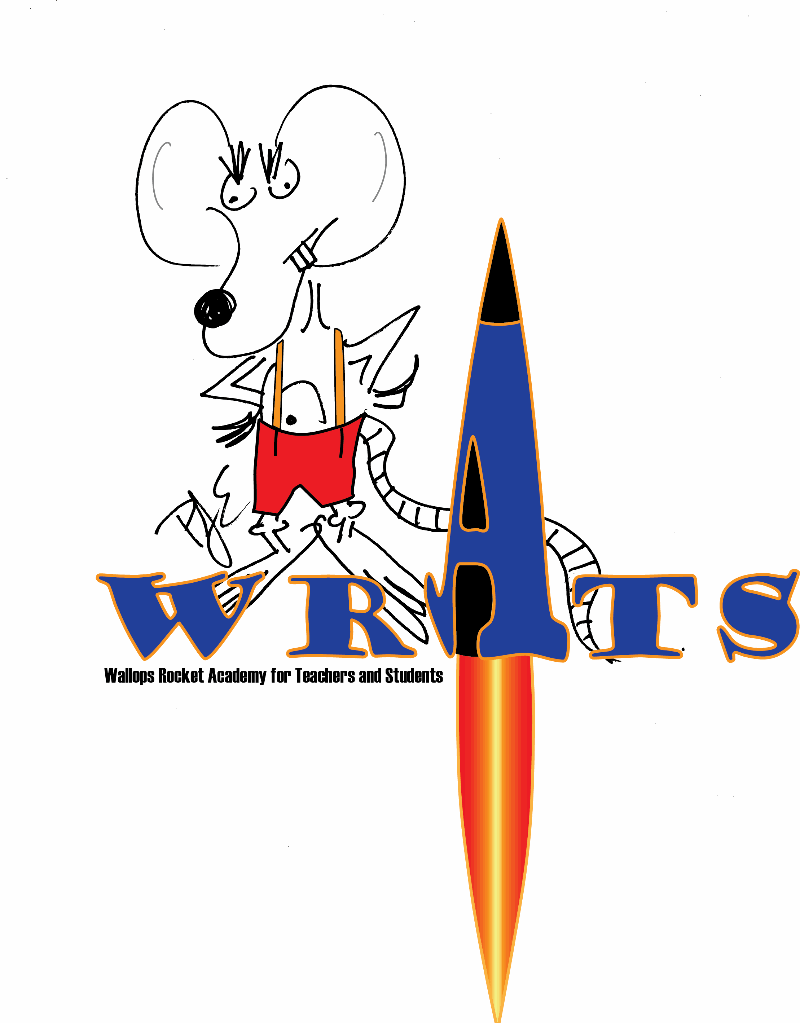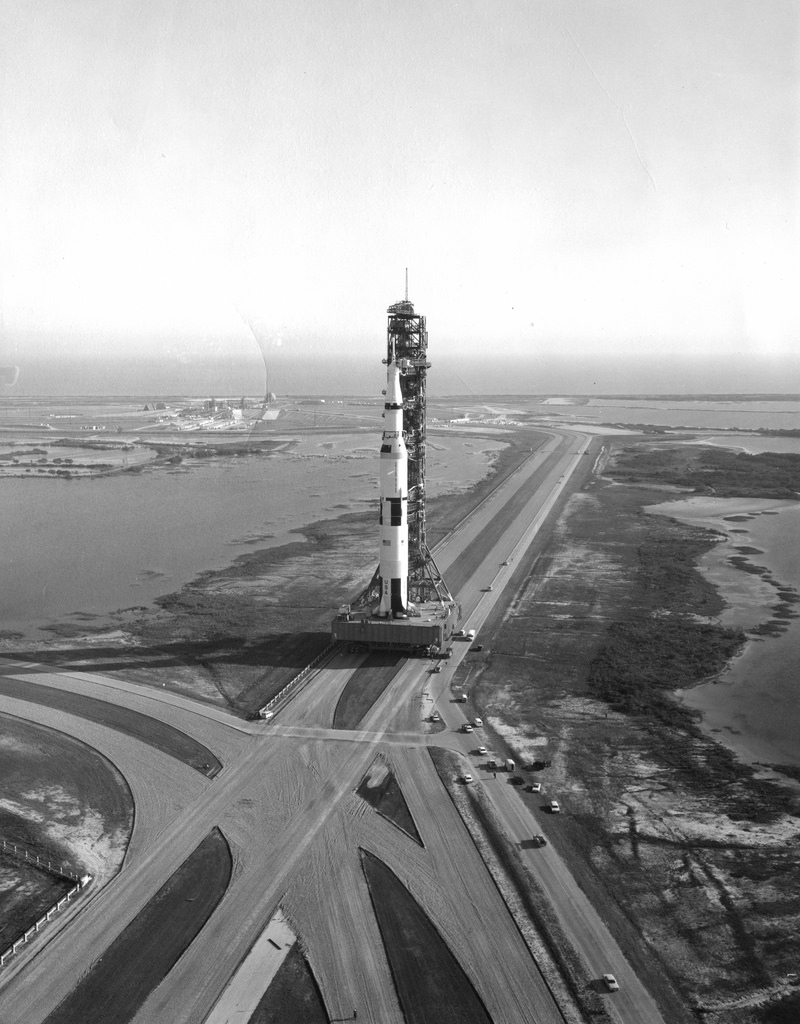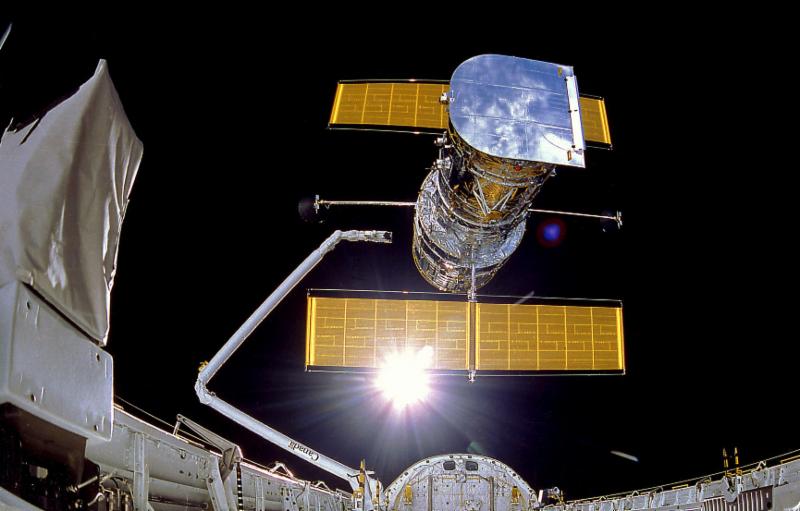| ~~~~~~~~~~~~~~~~~~~~~~~~~~~~~~~~~~~~~~~~~~~~~~~~
National Association of Rocketry
Educator's Newsletter
April 2020
~~~~~~~~~~~~~~~~~~~~~~~~~~~~~~~~~~~~~~~~~~~~~~~~ |
|

A Good Time for a Productive Distraction
In NAR we would say
anytime is a good time to build a rocket, but in this unsettled moment we are now enduring where much of the country is sequestered at home, building a rocket kit is a productive distraction. As a teacher, your school where you work and your children's school as well may be closed so this unexpected furlough is a chance for their enrichment and your professional development. Hopefully you will have the local retailers who sell rockets that are still open, at least enough to "pick up curbside," but if not there are many vendors online for shopping and delivery. Rockets need only household tools for assembly-white glue, sandpaper, tape, items you probably already have. In an day of concentrated effort and you will have your bird completed. There are plenty of videos online for help
https://www.youtube.com/watch?v=sxQ7vGgXx5Y, or see
https://www.nar.org/educational-resources/model-rocket-building-techniques/. Then you can explore how to use the rocket in your class. There are resources at
https://www.nar.org/educational-resources/. By the time the weather gets warmer you'll be able to go out and fly, hopefully with your class or a rocket club. The national crisis upon us will pass and we will have clear skies again. Let's build for that day!
Aim high!
Vince Huegele
NAR Education Chairman
|
 2020 The American Rocketry Challenge (TARC)
2020 The American Rocketry Challenge (TARC)
The effect of the COVID-19 pandemic has made it clear that TARC 2020 cannot continue. We have had to move the whole TARC 2020 program onto the TARC 2021 timeline and start over in September, using exactly the same rules as TARC 2020 so nobody has to go buy new parts and motors and all the teams' work to date is not wasted. We're saddened, though, that those TARC team members who are seniors this year are losing so many important parts of their school year, including the opportunity to win a spot in the TARC Finals.
- The 2021 season of the American Rocketry Challenge will use the same rules as the 2020 season. All registered 2020 teams will be automatically registered for the 2021 season. No additional action or payment is required to enter the 2021 season. Your current registration will remain active. Those teams wishing to withdraw and no longer compete next year may receive a refund of their registration fee.
- Flying and submitting qualification flights will remain suspended until September 1, 2020, or such time that AIA and the NAR determine that it is safe for launches to resume in all 50 states.
- Teams may freely add or drop students regardless of 2020 qualification flight status.
- Teams that have already submitted qualification flights may either keep all their current scores or withdraw all their flights. Teams that have submitted only one or two qualification flights may keep those and still fly their remaining flights when flying resumes.
While the National Finals may be postponed until 2021, the new Marketing Competition, Presentation Competition, and Engineering Notebook Competition are still on! The deadlines for those competitions are still being extended as we work to add new elements to help everyone compete in these virtual competitions in our current stay-at-home situation. Updated information on those competitions, including new deadlines, prizes, and ways to compete over the next two months is posted on the TARC website
www.rocketcontest.org
.
NAR 4322 L3
TARC Manager
|
 NAR Scholarship Program, Robert L. Cannon Award, and Extracurricular Activity Grant Awards NAR Scholarship Program, Robert L. Cannon Award, and Extracurricular Activity Grant Awards
Did you know that if you are NAR member between the ages of 17 and 22 attending college or a vocational school that you may be eligible to receive a scholarship?
Are you a teacher or educator who uses model rocketry in the classroom? You are welcome to apply for a $500 grant to use in your program.
In 2001, the NAR's scholarship and Robert L. Cannon educational awards were inaugurated. Since 2010, we have awarded up to ten $500 Cannon grants and ten scholarships per year.
In 2015, a new program, the NAR Extracurricular Activity Grant (EAG) was initiated to provide up to ten $500 grants for after-school activities, such as rocket clubs, scout, Civil Air Patrol, 4-H, or NAR section programs involving model rocketry. TARC teams are not eligible for these awards.
The
deadline for applications is June 1st.
|
Interested in a Fellowship this Summer?
The IISME
Ignited Education Program places
eligible teachers of all subjects into high-performance work sites for the summer. It
is a full-time placement offering teachers the opportunity to experience first-hand what it takes to be successful in today's industry and research environments. For eight weeks, teachers are matched with a leading company, university, or research organization where they work closely with an experienced mentor to complete a real-world project. Fellows gain skills, share experiences, and develop tailored STEM curriculum to engage and inspire their students.
Teachers work for eight weeks and are paid up to $9,000 for their work: Fellows receive a
stipend of $7,000, plus up to $2,000 in Fellowship Grants.
|
Sacknoff Prize for Space History
To encourage research and writing in space history, Quest: The History of Spaceflight is offering $300 and a publishing opportunity to our upper-class undergraduate or graduate level students. If you are writing a paper on any aspect of spaceflight history, considering submitting it to quest@spacebusiness.com. Check out the details here--Space History. |
|
INSPIRING OTHERS
 Student Programs and Projects
Student Programs and Projects
Looking for something different? Check out NASA's A-Z list of education opportunities that NASA offers throughout the year.
Amateur Radio on the International Space Station (ARISS)
Want to Talk to an Astronaut on the International Space Station?
Amateur Radio on the International Space Station (ARISS) contacts allow education audiences to learn firsthand from astronauts what it is like to work and live in space. These scheduled contact opportunities are offered to formal and informal education institutions and organizations, individually or working together. The radio contacts are approximately 10 minutes in length due to the radio communication window permitted by the logistics of orbital passes of the ISS. During the contact, students interact directly with astronauts and cosmonauts during this communication window using a question and answer format.
|
|
National
Coalition for Aviation and Space Education
AIAA Foundation Educator Achievement Award
Do you know a deserving K-12 Classroom teacher that deserves to be recognized? Honor a K-12 classroom teacher for the work they do to support the American Institute of Aeronautics and Astronautics (AIAA) in its efforts to bring "real world" STEM (Science, Technology, Engineering, and Math) to the classroom in new and exciting ways. Nominate teachers who excite and engage students through STEM content and experiences. Through this recognition, AIAA celebrates the "best and brightest" educators for inspiring students. Each award recipient will be honored at the AIAA Aerospace Spotlight Awards Gala.
A nominee may be any K-12 teacher who supports AIAA in its efforts to bring "real world" STEM experiences to students. Past recipients may not apply for this award a second time. All recipients must be or become an AIAA Educator Associate member. Preference will be given to educators who demonstrate active participation and use of AIAA resources in their classroom.
The WEX Foundation
NCASE's newest member, the WEX Foundation, was established to advance middle and high school education in Science, Technology, Engineering, and Mathematics (STEM) subjects by integrating space exploration technology with project-based learning, with the ultimate goal of creating a robust space technology workforce that will enable people to live on other planets.
The Foundation's focus is to promote science, technology, engineering, and mathematics (STEM) education for K-12 curriculum development; improving STEM teaching and student comprehension in school districts and areas where students have been traditionally under-served and under-represented in institutions of higher education; to prepare and encourage low-income, first-generation college-bound students and students with disabilities to pursue higher education and careers in human space exploration.
One of the goals for the Foundation this year is to get one of their student science instruments on one of the commercial lunar landers NASA has recently contracted with to provide delivery services to the moon through their CLPS program. "Having our proposal selected as one of the science instrument payloads would be a major achievement for us," said Ximenes.
Students can be involved in a number of programs at WEX including Lunar Caves Analog Test Sites (LCATS) and Lunar Ecosystem and Architectural Prototype (LEAP2). LCATS is a NASA funded Space-STEM learning curriculum. The LCATS program environment engages a pipeline of motivated middle and high school students selected from San Antonio, Texas area school districts to assist aerospace professionals solve real-world space exploration technology development challenges through investigations of science experiments, space exploration mission operations, technology development, and habitability system architectures for Space-STEM learning performance.
Check out the WEX Foundation website!
Subscribe
to the NCASE
Monthly Newsletter and find out what
thousands of young people and educators are doing!
|
 4-H
4-H
Uses Model Rocketry for Science, Technology, Engineering and Math
(STEM)
Rocketry is one of the most enjoyable projects 4-H has to offer. 4-H and the National Association of Rocketry have formed a
partnership to help students learn about model rocketry and STEM.
Delaware County and Pennsylvania State University
Delaware County 4-H, for example, provides
Rocketry School Enrichment and After School Enrichment Programs that help students meet Pennsylvania Academic Standards in science. 4-H project books are available for Delaware County, Pennsylvania classroom teachers, home school families, and after school clubs to use with students.
|
 Civil Air Patrol (CAP)
Civil Air Patrol (CAP)
Promotes and Supports Aerospace Education
CAP educational programs (for its own members and the general public) help prepare American citizens to meet the challenges of a sophisticated aerospace society and understand its related issues. CAP and the national Association of rocketry have formed a partnership to help students learn about model rocketry and STEM.
National Standards-based Products
CAP offers national standards-based educational products, including a secondary textbook, Aerospace: The Journey of Flight, and the middle-school-level Aerospace Dimensions. Aerospace Education Members can get classroom materials and lesson plans from CAP. |
|
Estes
It's spring...the prime time for model rocketry at schools
! Estes Educator works with many educators daily, getting lots of calls and emails from teachers and youth group leaders who have never built and launched a model rocket but who want to do that with their students.
Help NASA find new disks, homes of extrasolar planets, by classifying images from NASA's Wide-field Infrared Survey Explorer telescope and other observatories. In this citizen science project, you'll view animated images of disk candidates and classify them, distinguishing good candidates from galaxies, asteroids and image artifacts.
|
Wallops Rocket Academy for Teachers and Students (WRATS)

It's time to sign up for WRATS! The Wallops Rocket Academy for Teachers and Students (WRATS) provides high school educators with a technical flight experience that will reinforce science, technology, engineering and mathematics (STEM) concepts. WRATS offers an authentic, hands-on rocketry experience based on NASA's sounding rocket engineering and science data collection. WRATS will be held at NASA GSFC Wallops Flight Facility, June 18 - 22, 2018. Teachers interested in attending WRATS should contact Linda Sherman, by email at Linda.A.Sherman@nasa.gov.
|
 NASA Makes Finding Teaching Materials Easy
NASA Makes Finding Teaching Materials Easy
NASA's
Education Materials Finder will help teachers locate resources that can be used in the classroom. Users may search by keywords, grade level, product type and subject. With hundreds of publications and Web sites indexed, the finder is the best way to locate NASA educational resources.
NASA's Adventures in Rocket Science Educator's Guide
This guide contains 25 activities designed for 4-H Clubs, Boys and Girls Clubs, Boy Scouts, Girl Scouts, after-school programs, and other informal education venues. Participants learn about the history and principles of rocketry and NASA's newest rockets -- Ares I and Ares V. While doing these hands-on activities, participants also learn about Hero Engines, parachutes and surface area, altitude tracking, and Newton's Laws Of Motion. Learners can also build four types of rockets and two types of egg drops. Take a look at the
Adventures in Rocket Science Guide!
|
 National Association of Rocketry (NAR) offers Teachers and Youth Group Leaders Resources
National Association of Rocketry (NAR) offers Teachers and Youth Group Leaders Resources
The NAR offers
Free Resource downloads produced by members who have helped teachers and youth group leaders like yourself all over the United
States. Check these out and see if any match what you had in mind for your course!
|
 Civil Air Patrol Civil Air Patrol
Aerospace Library
Dedicated to promoting and sharing Aviation, Air Force, CAP & NASA History, the folks at the Civil Air Patrol have put together a fantastic library of rocketry resources! Check it out!
Aerospace/STEM Education Products
|
|
| |
| Space History April 2, 1915: President Woodrow Wilson appointed the first 12 members of the National Advisory Committee for Aeronautics (NACA). Twenty one days later, on April 23, the Secretary of War called the first meeting in his office. Brig. Gen. George P. Scriven, Chief Signal Officer, was elected temporary chairman, and Dr. Charles D. Walcott, secretary of the Smithsonian Institution, was elected first chairman of the NACA Executive Committee.
April 4, 1930: David Lasser, G. Edward Pendray, Fletcher Pratt and nine others founded The American Interplanetary Society, later the American Rocket Society (ARS), in New York City to promote interest in and work toward interplanetary expeditions and travel.  April 1, 1945: The U.S. Army fired the first of 17 Jet Propulsion Laboratory Private F rockets at Hueco Range at Fort Bliss, Texas as part of its historic Ordnance/CIT ballistic rocket program. April 1, 1945: The U.S. Army fired the first of 17 Jet Propulsion Laboratory Private F rockets at Hueco Range at Fort Bliss, Texas as part of its historic Ordnance/CIT ballistic rocket program.
April 4, 1960: Frank D. Drake initiated Project Ozma using the 85-foot Howard E. Tatel Radio Telescope at the National Radio Astronomy Observatory at Green Bank, W. Va. It was the first systematic attempt to detect artificial radio signal patterns from nearby stars. After 150 hours of listening, the project returned no evidence. However, Project Ozma was the precursor for many more, increasingly sophisticated searches which continue today.
April 6, 1965: The United States launched Intelsat I, the first commercial communications satellite, into geostationary orbit. Also called "Early Bird," the satellite provided the first scheduled transoceanic television service and was operational for 3.5 years.  April 11-17, 1970: NASA launched Apollo 13 via a Saturn-V rocket. About 56 hours into the flight, an oxygen tank in the Apollo service module exploded and damaged several of the systems, including life support. People throughout the world watched, waited and hoped as NASA personnel on the April 11-17, 1970: NASA launched Apollo 13 via a Saturn-V rocket. About 56 hours into the flight, an oxygen tank in the Apollo service module exploded and damaged several of the systems, including life support. People throughout the world watched, waited and hoped as NASA personnel on the 
ground and the Apollo crew worked together to find a way safely home. Astronauts Jim Lovell, Fred Haise and Jack Swigert used the lunar module as a lifeboat before returning to the control module for reentry. After a dramatic period of innovative recalculation at Mission Control Center at NASA's Kennedy Space Center inHouston, Texas, the crew returned safely six days later.
April 26, 1980: The U.S. Department of Defense launched the NavStar 6 navigation satellite via Atlas F rocket from Vandenberg Air Force Base in California. The NavStar Global Positioning System (GPS) is a radio-positioning system of satellites providing navigation and timing information to military and civilian users across the globe.
April 29, 1985: NASA launched the space shuttle Challenger (STS-51B) from Kennedy Space Center, Fla. It was the first operational flight for the Spacelab orbital laboratory series developed by the European Space Agency (ESA). The orbiter made its first crosswind landing at Edwards Air Force Base in California at the end of this mission.
 April 24, 1990: NASA launched the Hubble Space Telescope on space shuttle Discovery (STS-31). Soon after launch, controllers found the telescope was flawed by a mirror defect only 1/25th the width of a strand of human hair. Scientists found a way to work around it using computer enhancement, and engineers planned a shuttle repair mission to fully correct it. Hubble has made many important astronomical discoveries, including generating images of galaxy M87 and providing evidence of a potentially massive black hole. April 24, 1990: NASA launched the Hubble Space Telescope on space shuttle Discovery (STS-31). Soon after launch, controllers found the telescope was flawed by a mirror defect only 1/25th the width of a strand of human hair. Scientists found a way to work around it using computer enhancement, and engineers planned a shuttle repair mission to fully correct it. Hubble has made many important astronomical discoveries, including generating images of galaxy M87 and providing evidence of a potentially massive black hole.
April 3, 1995: NASA launched the MicroLab 1 mini-satellite on a Pegasus rocket carried aloft by an L-1011 aircraft flying out of Vandenberg Air Force Base in California. The mini-satellite carried meteorological experiments designed to track lightning and to provide detailed temperature and moisture profiles across the globe. Data from this mini-satellite has shown more than 1.2 billion lightning flashes occur around the world every year, with more lightning strikes occurring over land masses than over the oceans.
April 4, 2000: Russia launched Soyuz TM-30 from The Baikonur Cosmodrome in Kazakhstan on the last Soyuz mission to the 14 year-old Mir space station. Cosmonauts Zalyotin and Kaleri reactivated the uninhabited station and used two Progress spacecraft to raise the station's orbit. Prior to this mission, Mir's orbital plane was only around 120 degrees away from the International Space Station, making transport between the two stations impossible.
April 15, 2005: Russia launched Soyuz-TMA 6 from The Baikonur Cosmodrome in Kazakhstan carrying the Expedition 10 crew to the International Space Station. The crew included three astronauts; Sergei Krikalev (Russian), John Phillips (American) and Robert Vittori (Italian.) During the mission, Krikalev broke the record for total time in space.
|
 Quick Links... Quick Links...
~~~~~~~~~~~~~~~~~~~~~~~~~~~~~~~~~~~~~~~~~~~~~~~~
|
|
| |
|